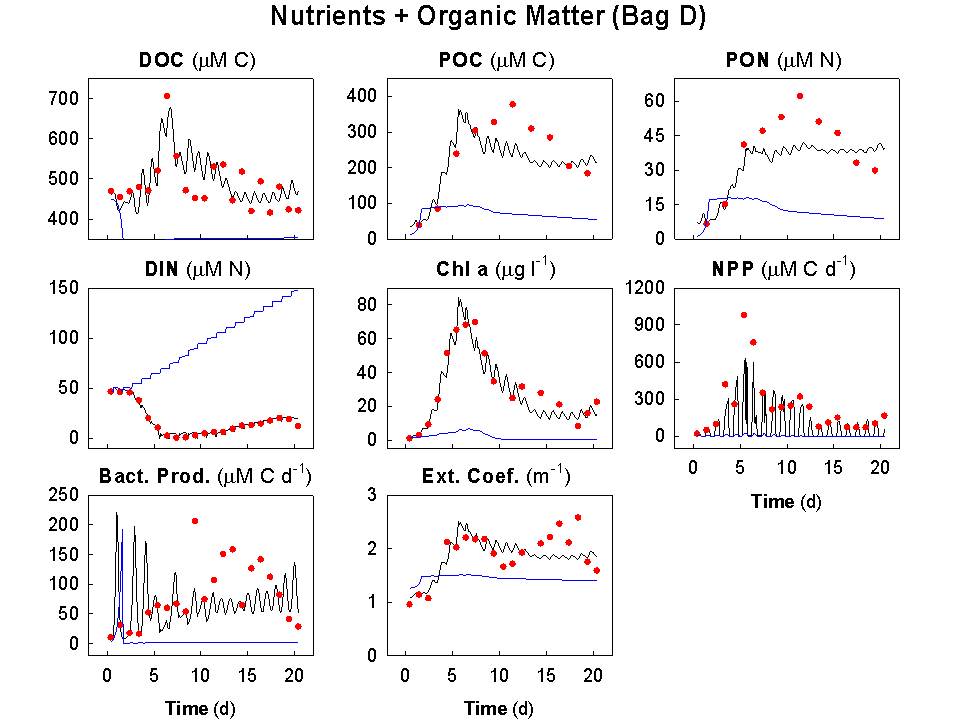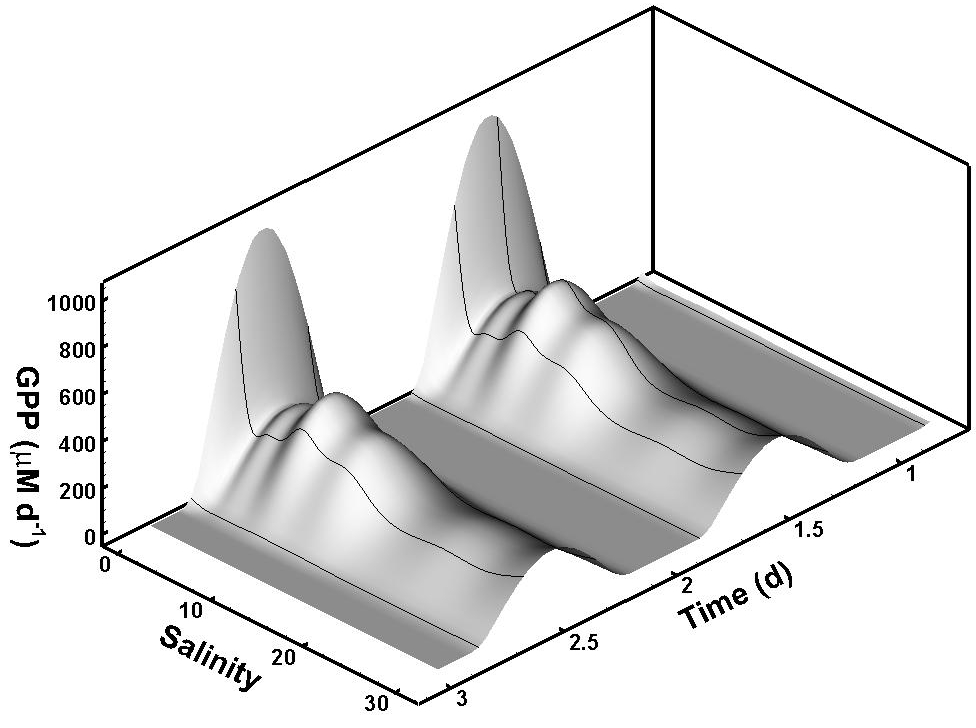
Data assimilation used to improve microbial food web model using microcosm experiments.
 |
Microbial Food Web Data assimilation used to improve microbial food web model using microcosm experiments. |
 |
Estuarine
Metabolism In this example data assimilation is used to estimate estuarine gross and net production as well as community respiration by combining dissolved oxygen measurementes with our 1D AD model. |